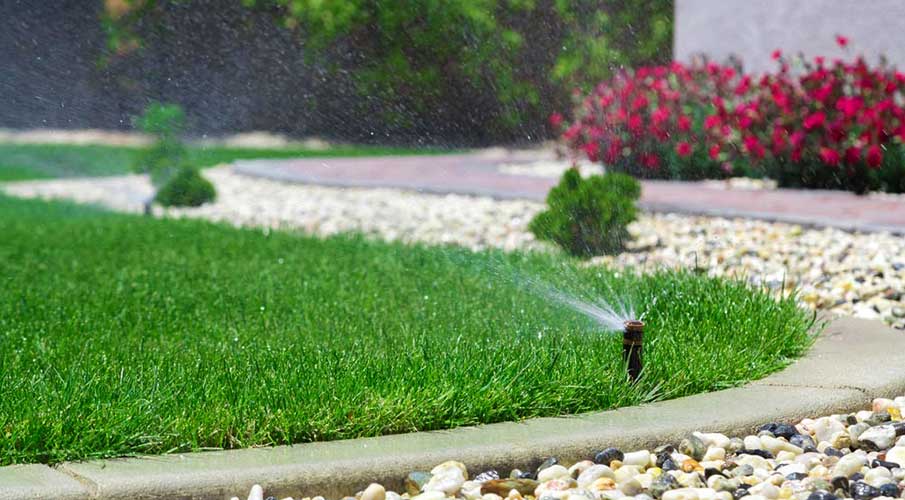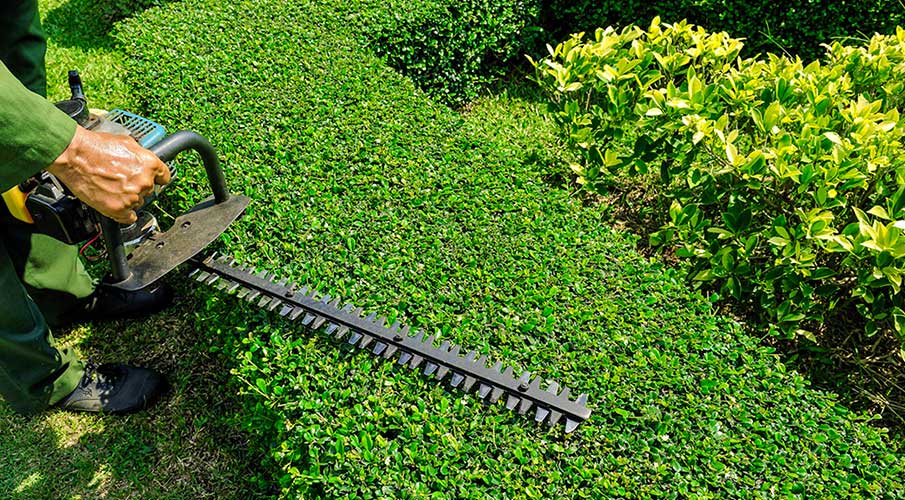As a homeowner living in the transition zone with fescue grass, it’s important to know how to water your lawn properly. Watering your lawn is crucial for maintaining a healthy and lush lawn. In this article, we will discuss the best practices for watering your lawn. Including the amount and frequency of watering, how to set your sprinkler timers, the time of day to water, and adjusting your watering for the seasons.
Amount and Frequency of Watering
The amount and frequency of watering for your fescue lawn depend on various factors such as soil type, climate, and sun exposure. Typically, it is recommended to water your lawn deeply and infrequently rather than frequently and shallowly. This means that you should water your lawn enough to penetrate the root zone, but not so much that it causes water to run off the lawn and waste water.
The amount of water needed to penetrate the root zone varies depending on the type of soil you have. Sandy soils, for example, require more frequent watering but for shorter periods of time, as they do not retain water as well as clay soils. On the other hand, clay soils can hold more water, but they tend to drain slower, so you may need to water less frequently but for longer periods. One advantage of water longer is that it promotes root growth.
In general, you should aim to give your fescue lawn about 1 to 1.5 inches of water per week, which can be split up into two to three watering sessions. However, this can vary based on factors such as temperature, rainfall, and humidity. During hot, dry weather, your lawn may need more water to stay healthy, so it’s important to monitor the weather and adjust your watering accordingly.
How to Set Your Sprinkler Timers
As mentioned above, we want to shoot for 1 to 1.5 inches of water on the lawn per week. Setting your sprinklers to get this amount down can be a bit tricky though. Irrigation systems water at different rates depending on the brand and layout of the sprinklers. So it’s important to test your settings to see how much water you put out. The easiest way to do this is to set a couple of tuna cans out in each of your water zones, water, then measure how much water is in each can. If you’re watering twice per week you’ll want to set your timers so that 3/4 inch of water ends up in the can. If you’re watering 3 times per week set them to put out 1/2 inch of water.
Time of Day to Water
The time of day that you water your lawn is also important. Ideally, you should water your lawn early in the morning, between 4 am and 8 am, when the sun is low, and the air is cool. This allows the water to soak into the soil without evaporating too quickly.
Watering in the evening can cause problems such as fungal growth. The water sits on the grass blades and doesn’t evaporate until the morning. Watering during the hottest part of the day is also not recommended, as the water can evaporate before it has a chance to soak into the soil. Droplets of water can also act as magnifying glasses during the day. This can cause the light from the sun to scald the grass.

Adjusting Watering for the Seasons
Your irrigation timers need to be seasonally adjusted. In the transition zone, fescue grass goes under heavy stress during the hot summer months. While spring and fall have ideal temperatures for this grass.
In Springtime you may not need to water much. Frequent rains mean you won’t have to run your system as much. Shoot for twice a week, but let mother nature do your work when she’s willing.
During the summer, when your fescue lawn is under the most heat stress, you can prevent the browning and dying of the grass by watering more frequently. Aim to give your lawn the same 1 to 1.5 inches of water per week, but split it into 3 watering per week instead of 2.
In the fall, as the weather cools down, you can go back to 2 waterings per week. This is especially important if your area experiences a dry spell during these months. When the seasonal rains come through, you can adjust your sprinklers accordingly. Just shoot for twice a week.

Summing Up How to Water Your Lawn
In summary, watering your fescue lawn is important for maintaining a healthy and lush lawn. To water your lawn properly, you should follow these key points:
- Water deeply and infrequently rather than frequently and shallowly to promote healthy roots.
- Aim to give your fescue lawn about 1 to 1.5 inches of water per week.
- Split your watering into two sessions during Spring and Fall, and three sessions in the Summer.
- Set your sprinklers to deliver the right amount of water by testing and adjusting them accordingly. Use a tuna can and measure your output.
- Water your lawn early in the morning, between 4 am and 8 am, when the sun is low, and the air is cool.
- Adjust your watering schedule according to the weather to prevent over or under watering.
By following these best practices, you can help your fescue lawn stay healthy, vibrant, and green throughout the year.
Want someone to check out your sprinklers? Click here to get a quote for anything related to lawn care from Midwest Turf Pros



